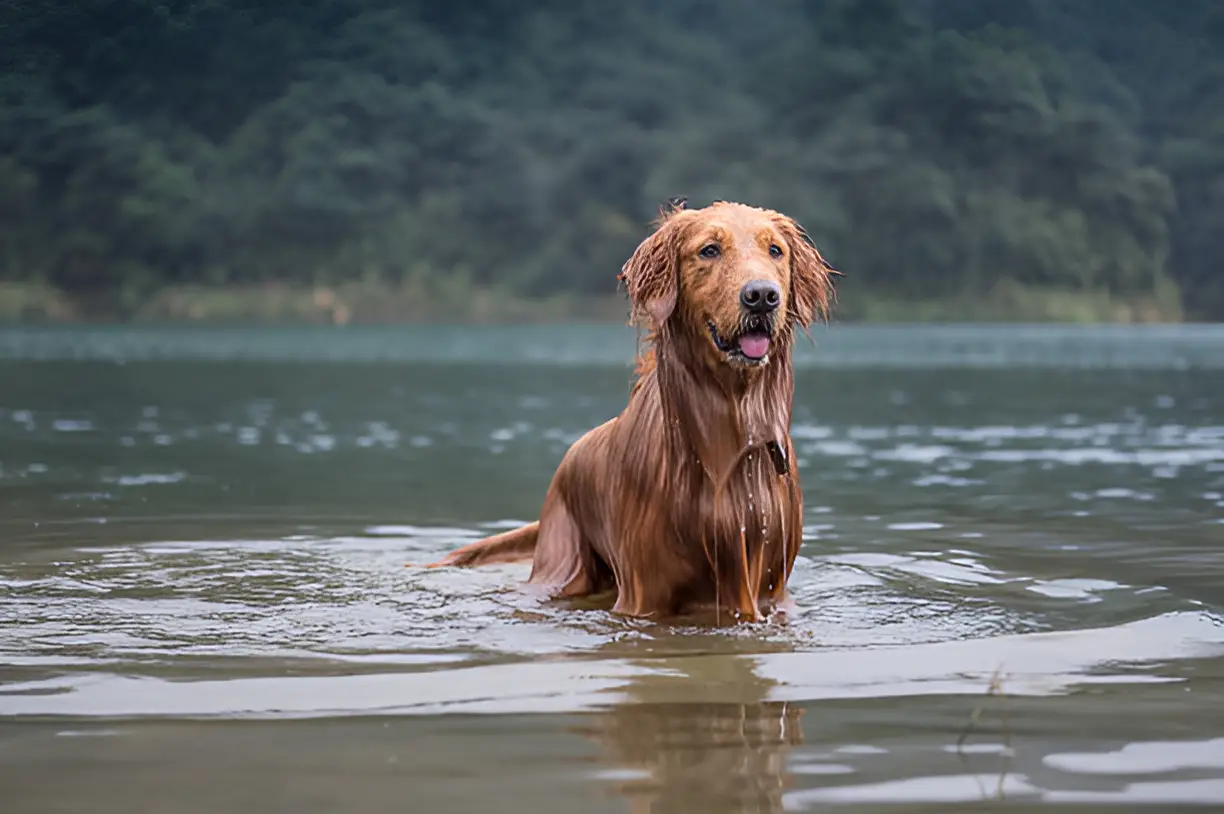Dogs can drink moving river water, but it poses several health risks due to potential contaminants like bacteria, parasites, and chemicals. When you’re out enjoying nature with your dog, it might seem natural to let them drink from a flowing river. However, while moving water is generally cleaner than stagnant water, it can still harbor various hazards that can make your dog sick. This comprehensive guide will explore the risks associated with drinking river water, how to ensure your dog’s safety, and alternative hydration options.
Understanding the Risks of River Water
River water, even when flowing, can contain numerous contaminants that pose health risks to dogs. Here are some of the primary concerns:
1. Bacterial Contamination: Rivers can be contaminated with bacteria such as E. coli and Salmonella, which can cause gastrointestinal issues in dogs. These bacteria often come from animal waste, agricultural runoff, or sewage leaks.
2. Parasitic Infections: Parasites like Giardia and Cryptosporidium can be present in river water. These parasites can cause severe diarrhea, vomiting, and dehydration in dogs.
3. Chemical Pollutants: Rivers can carry pollutants from industrial runoff, pesticides, and fertilizers. These chemicals can be toxic to dogs, leading to various health issues.
4. Toxic Algae Blooms: Certain types of algae, such as blue-green algae, can produce toxins that are harmful to dogs. These toxins can cause symptoms ranging from mild gastrointestinal upset to severe neurological damage.
Signs of Illness from Contaminated Water
If your dog drinks contaminated river water, it’s important to recognize the signs of illness and seek veterinary care promptly. Common symptoms include:
- Gastrointestinal Issues: Vomiting, diarrhea, and loss of appetite are common signs of bacterial or parasitic infections.
- Lethargy: A lack of energy or unusual tiredness can indicate that your dog is not feeling well.
- Fever: An elevated body temperature can be a sign of infection.
- Dehydration: Symptoms of dehydration include dry gums, sunken eyes, and decreased skin elasticity.
Preventing Your Dog from Drinking River Water
To keep your dog safe, it’s best to prevent them from drinking river water. Here are some strategies to consider:
1. Bring Fresh Water: Always carry fresh water and a portable water bowl when you go on outdoor adventures with your dog. This ensures they have access to clean drinking water.
2. Use a Leash: Keep your dog on a leash near bodies of water to prevent them from drinking river water or swimming in contaminated areas.
3. Train Your Dog: Teach your dog the “leave it” command to prevent them from drinking from unsafe water sources.
4. Monitor Water Sources: Be aware of any advisories or warnings about water quality in the areas you visit. Avoid letting your dog drink from rivers known to have contamination issues.
Safe Hydration Alternatives
Providing safe hydration alternatives is crucial for your dog’s health. Here are some options:
1. Filtered Water: Use filtered water from home to fill your dog’s water bottle or portable bowl. This ensures they have access to clean, safe water.
2. Bottled Water: In situations where you are unsure of the water quality, bottled water can be a convenient and safe option for hydrating your dog.
3. Portable Water Bottles: For outdoor activities, consider using portable water bottles designed for pets. These bottles often come with built-in bowls or dispensers, making it easy to provide clean water on the go.
What to Do If Your Dog Drinks River Water
If your dog drinks river water, monitor them closely for any signs of illness. Here are some steps to take:
1. Monitor for Symptoms: Keep an eye on your dog for any signs of gastrointestinal distress, lethargy, or other symptoms of illness.
2. Offer Fresh Water: Provide your dog with plenty of fresh water to help flush out any contaminants they may have ingested.
3. Avoid Inducing Vomiting: Do not attempt to induce vomiting unless instructed by a veterinarian, as this can sometimes cause more harm.
4. Contact Your Veterinarian: If your dog shows any signs of illness, contact your veterinarian immediately for advice and potential treatment.
Conclusion
In conclusion, while dogs can drink moving river water, it poses several health risks due to potential contaminants like bacteria, parasites, and chemicals. To ensure your dog’s safety, it’s best to prevent them from drinking river water and provide safe hydration alternatives. By recognizing the signs of water-related illness and taking appropriate precautions, you can help keep your dog healthy and hydrated during your outdoor adventures.
The photo featured below the post headline is Credit: chendongshan/istockphoto
I hope you find this post helpful and informative. If Yes’ feel free to share it with your friends!
Frequently Asked Questions
Can dogs drink moving river water?
Dogs can drink moving river water, but it poses several health risks due to potential contaminants like bacteria, parasites, and chemicals.
What are the signs of illness from drinking contaminated water?
Signs of illness include vomiting, diarrhea, lethargy, fever, and dehydration.
How can I prevent my dog from drinking river water?
Bring fresh water, use a leash, train your dog with the “leave it” command, and monitor water sources for contamination warnings.
What are safe hydration alternatives for dogs?
Safe alternatives include filtered water, bottled water, and portable water bottles designed for pets.
What should I do if my dog drinks river water?
Monitor for symptoms, offer fresh water, avoid inducing vomiting, and contact your veterinarian if signs of illness appear.

